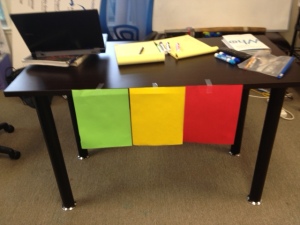Imagine this…an Acton Eagle middle schooler who at age fourteen:
- Simultaneously and successfully is taking online courses in Udacity; Coursera and EdX from universities like Harvard, Stanford and MIT, while serving as a consultant for her prestigious local university and some Silicon Valley venture capitalists on distance education.
- Recently gave a TEDX talk on the future of education.
- Just a few months ago became the youngest person ever to attend billionaire to Peter Thiel’s “20 under 20” conference for the best and brightest youth in the world.
- Most importantly – imagine this Acton Eagle is convinced that even Khan Academy is “like putting PDF’s of the Encyclopedia Britannica online” because the teacher still determines and sequences the lessons. This Eagle believes that a Wikipedia revolution is coming where individual students will source, curate and sequence videos, problems, simulations, projects, real world challenges and other learning experiences, with each student finding the pattern that works best for them, for a particular knowledge area or skill.
Her analogy is DNA. Sequencing chunks of educational material is like sequencing genes; each individual has a unique sequence that works best, but you can learn a great deal from sharing and studying the similarities and differences in the patterns, and how they vary between different people. She already has designed a website where students are sharing and comparing different sequences for different topics and is in discussions with venture capitalists to fund an expansion.
There’s no need to imagine Maria Teresa, because she’s a real person, a fourteen year old Eagle at our Acton Academy sister school in Guatemala City, Guatemala.

Yesterday, I introduced our Austin Eagles to Maria Teresa’s story at morning launch. At the end of the day wrap, I asked our Eagles what Maria Teresa has that they don’t, and one by one, individually challenged them to a Hero’s Journey as inspirational as hers by age fourteen.
I have faith that each and every one of our Eagles will do just that.
You can read more about Maria Teresa at http://ideamensch.com/maria-teresa/



